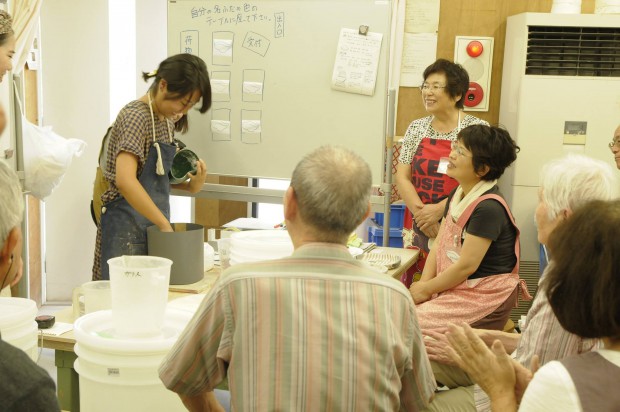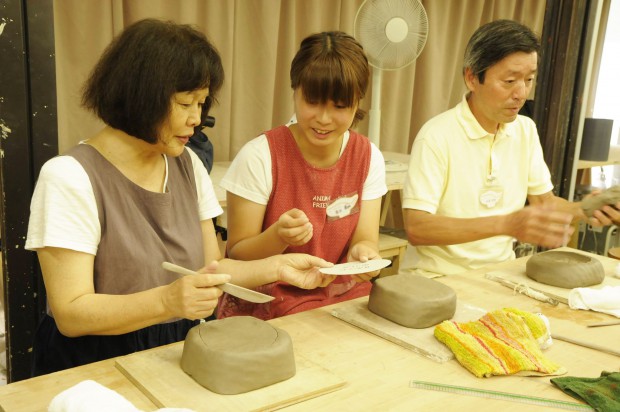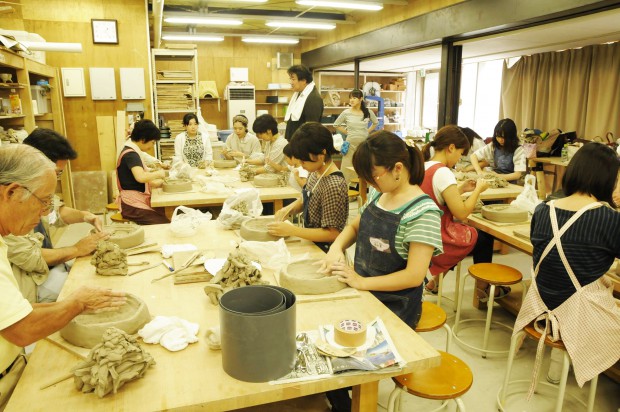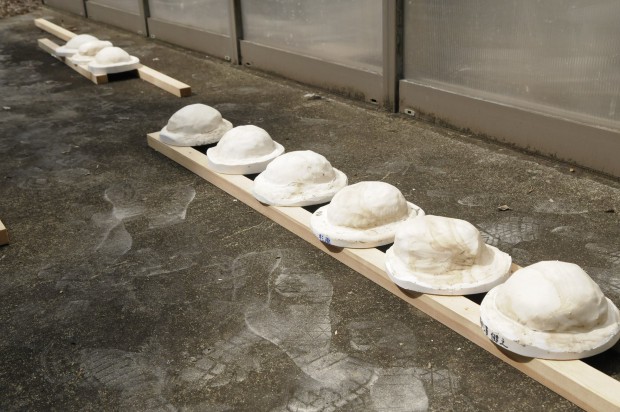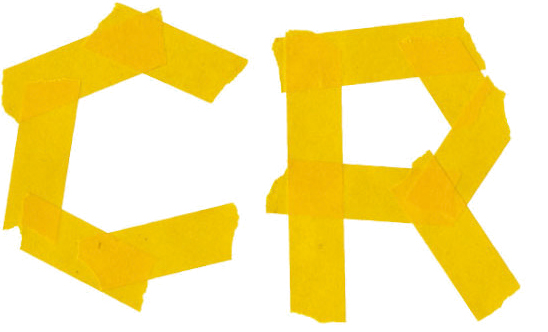On Saturday, Feb. 20, 2016, we held a puppet-show workshop at Hanawa-machi in Fukushima.
The participants consisted of 36 pupils, 1st through 6th graders, living in Hanawa-machi. The pupils who had volunteered for the workshop were called the “Hanawa Taken-tai (Expedition Team)”, and the fiscal year 2015 was their 9th and last time. That is why they all participated with much enthusiasm and energy.
The story of the puppet show was written based on a legend of the lake, which has been handed down in Hanawa-machi from the distant past. The characters involve Hachiman-Taro-Yoshiie, 3 kappas (river monsters in Japanese folklore) and a big white dragon.
”When Yoshiie was traveling through Hanawa-machi, he came across a large lake. When he approached the lake, he saw a swirling shadow! So Yoshiie climbed to the top of Mt. Yumihari, one of the highest in Hanawa-machi, and shot an arrow at the shadow. Then, a small kappa came out and cried, “Stop! Please help us fight the dragon together.” It also called on the children to make puppets of their friends to help save them. The children worked together and made puppets, which became their friends. Then, in the latter half of the play, 2 elder-brother kappas came out and said that the dragon was actually not a bad one. They asked that the arrow shot by Yoshiie be pulled out from the dragon. When the brother kappas chanted a magic spell, a big white dragon emerged and the children pulled out the arrow. At the end, Yoshiie suggested that they should have a festival to express their joy and everyone danced in a circle and partied. All is well that ends well!”
The workshop was an hour and a half long, but since there were comments such as “Time seemed to fly” in the questionnaires, everyone must have been focused and enjoyed the show. In the questionnaires, there were many positive comments, such as “Had lots of fun” and “The staff helped us a lot”. The fact that the children enthusiastically took part and had a great time was very inspiring and gave the members of the Taikan Taiken (Feel & Experience) Lab a sense of accomplishment, and it also had an interactive synergy effect that was uplifting to all of us. The preparations were hard and obviously quite tough for the students of the lab, but when it was over, we all went home to Tsukuba with a pleasant sense of fatigue and a big smile.
(Ono)
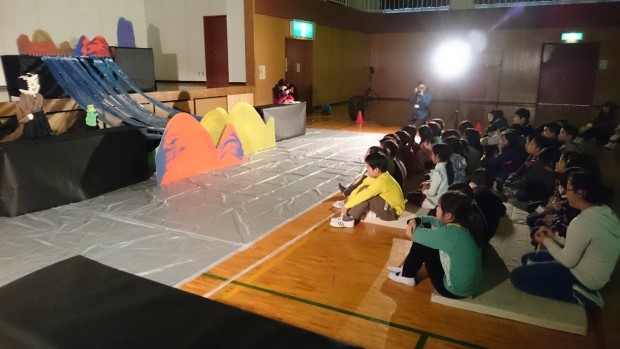
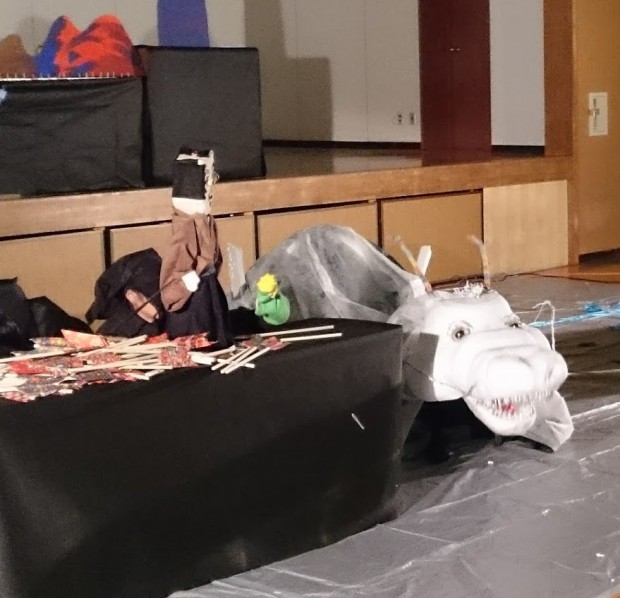
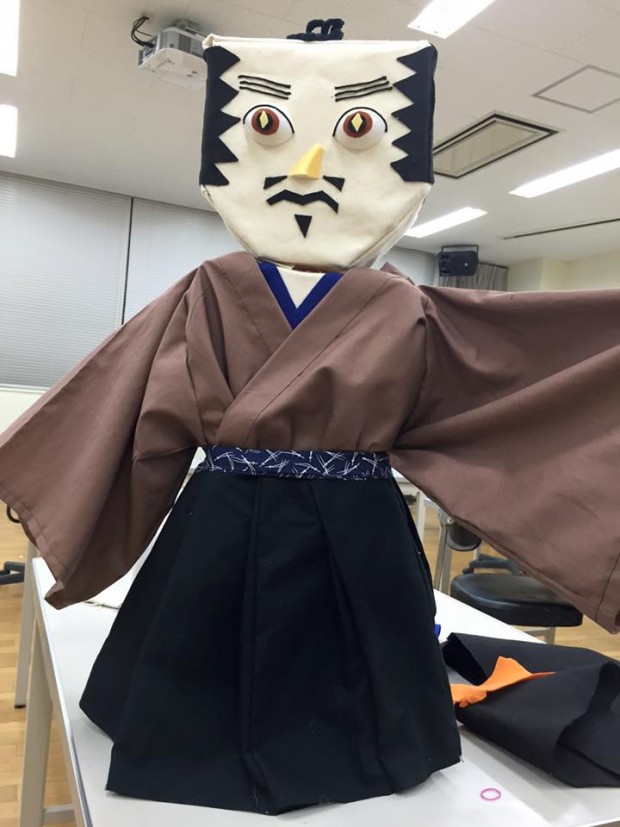
Category Archives: off-campus Challenge assignments
Taikan Taiken (Feel & Experience) Lab held Workshop at Ohzone Children’s Center
On Dec. 9, the Taikan Taiken (Feel & Experience) Lab held a workshop at Ohzone Children’s Center in Tsukuba city.
In preparation for the workshop, we carried out research to understand the characteristic of the children’s center, the age group of the children, as well as the elements that distinguish the area. Based on our findings, we combined the locality, creativity and physicality of the Yatabe district in Tsukuba to come up with a storyline for a puppet show.
In deciding on the storyline, we chose the character, Iiduka Igashichi, an inventor who actually lived in Tsukuba in the Edo Period, and with reference to what we had learned from our visit to the Yatabe Local History Museum, we talked about adopting such key words as “Oda Castle”, “Japanese clocks”, “Karakuri puppets (traditional Japanese mechanized puppets)” as sub-themes.
In the end, we chose to start the story off by relating that an essential part of Igashichi’s Karakuri puppet, which is his creation, had been stolen, and that the villagers decided to make Karakuri puppets of their own to try and help Igashichi. Preparations for the performance started by practicing with the puppets, creating sound effects, choosing materials for making the puppets, checking safety concerns, getting ready for ways to engage with the children, and making use of the experiences that were acquired through the workshops.
The children at the Ohzone Children’s Center were very lively and they were very enthusiastic in their response to the puppet show and making of the puppets. In the scene where they sneak into the thieves’ lair, the children seemed to enjoy the thrill of dodging obstacles in the dark.
Through our experience in conducting workshops, members of the team discovered that games and creative means of expression might lead to emotional care in dealing with children, who are, unlike adults, harder to communicate with words alone. (Nagata, MC1 at School of Art & Design)
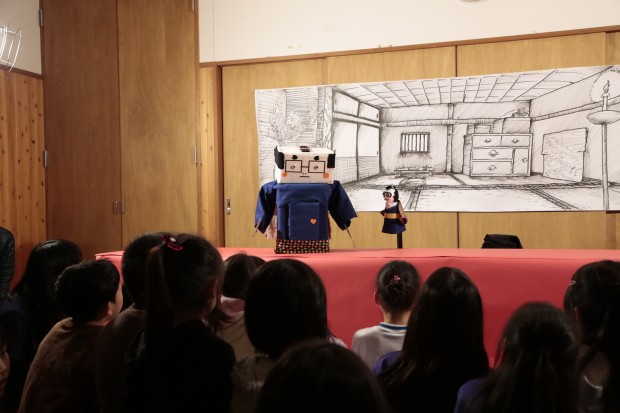
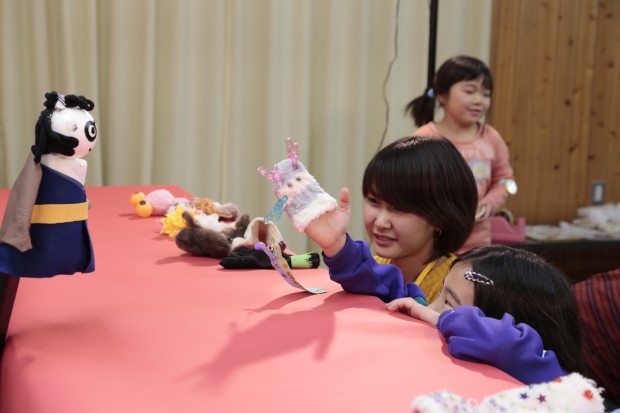

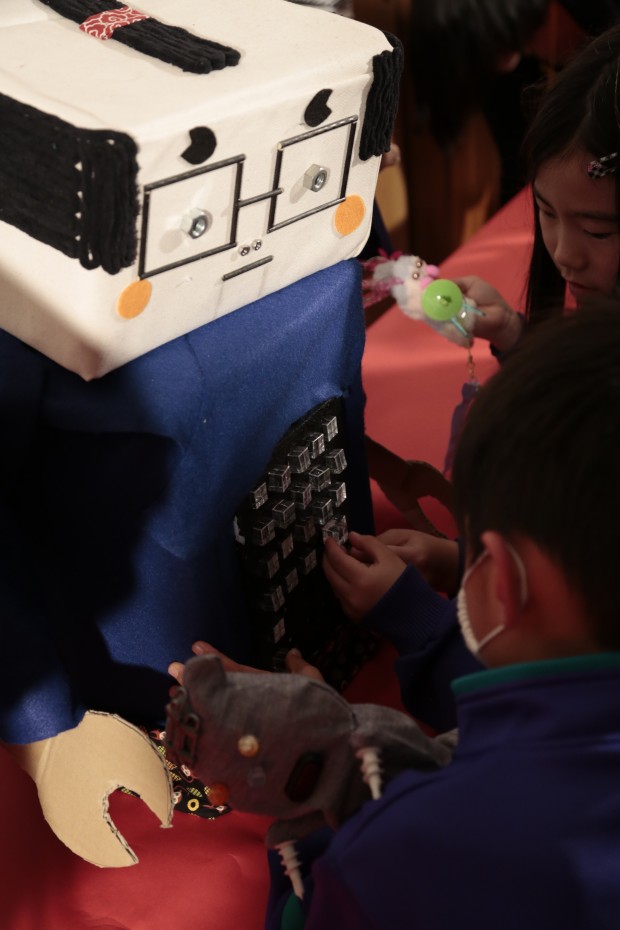
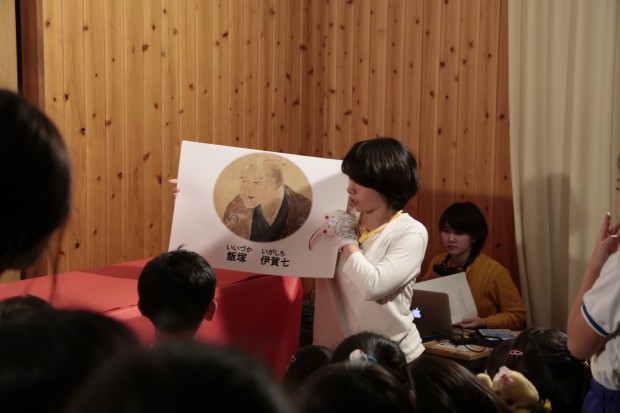
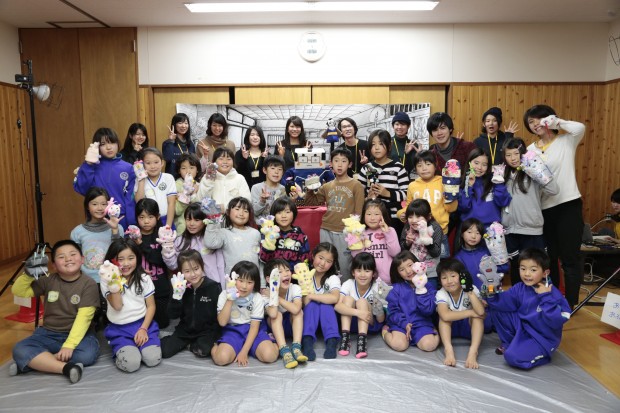
Vacant Properties Team held Idobata Gallery
The Vacant Properties Team held “Idobata Gallery” from Nov. 1 till Nov. 5.
By displaying artworks at a vacant property not in use, our goal was to create a community space where people would naturally gather around and start up a conversation, just like the way people meet up by the office water cooler to chitchat on the current gossip.
We put on display the colorful autumn-colored happi coats that we made with the staff at Fureai House and the children of Hojo Elementary School at the workshop on Oct. 24.
Many people stopped by to take a look at the exhibit, and we had a great time striking up friendly conversations with the visitors and taking photographs with them wearing the happi coats. The children who took part in the workshop came, too, wearing their original “my happi coat”!
Through the kindness of the Bureau for Promotion of Town Development, we also had the opportunity to exhibit the happi coats at a concert by the Vienna Piano Quartet that was held at Miyasei-Okura on Nov. 14. The members of the Vienna Philharmonic put on the happi coats for us, too!
The classical music concert at Miyasei-Okura.The classical music concert at Miyasei-Okura.
(Muranaka, 4th year at College of Policy and Planning Sciences)

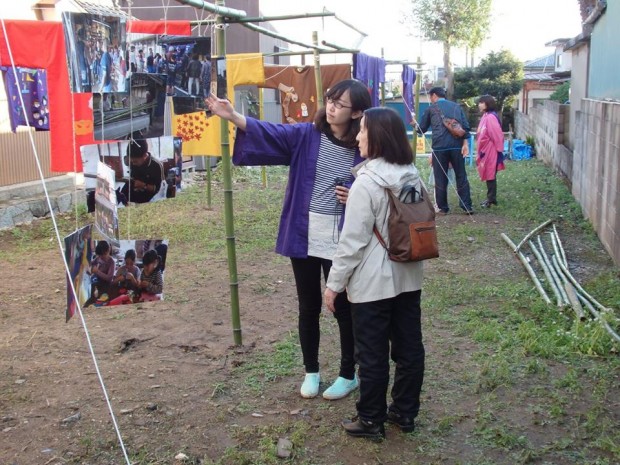
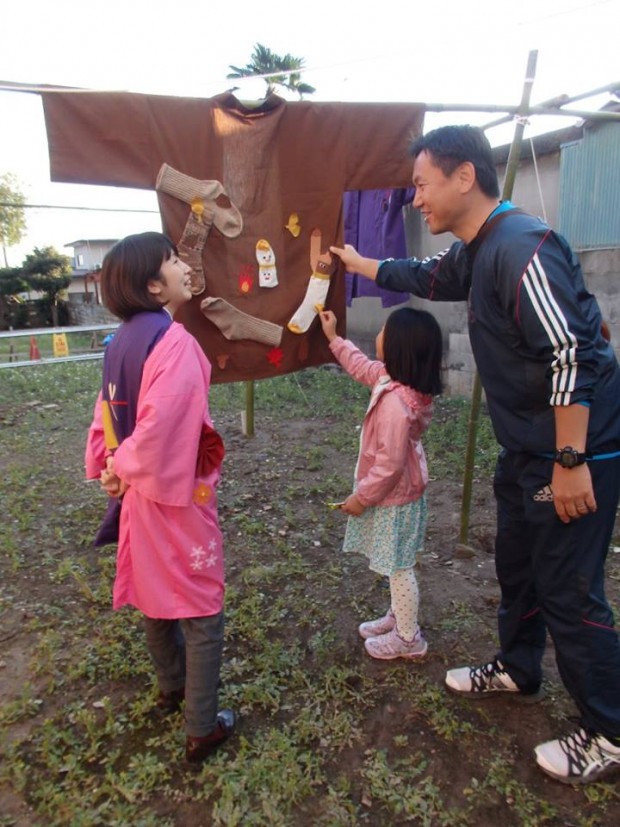
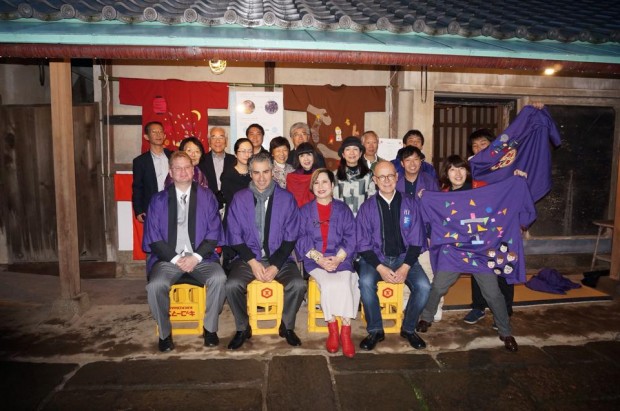
Vacant Properties Team held “Workshop to make Happi coats”.
On Oct. 24, the Vacant Properties Team held a workshop to make happi coats with the children of Hojo Elementary School.
It was a project in preparation for the “Idobata Gallery” held on Nov. 1, and together with the 5-autumn-colored happi coats for the exhibition, each participant decorated his/her own “my happi coat” at the workshop.
The “Idobata Gallery” was held in time with 2 other festivals, the Autumn Hojo Market and Mt. Tsukuba Foothills Autumn Festival, and by having the children and Vacant Properties Team members wear happi coats, we hoped to attract the attention and interest of the young generation to the festivals and the locality.
We also wished the children to get a feel of the history of Hojo by making the happi coats at the Hojo Fureai House, which used to be a kimono store.
The children were at first somewhat slow to start, but once they got the idea, they used their imagination and added their own original decorations. Since everyone worked very hard, many wonderful happi coats were made. We couldn’t wait to see them at the Idobata Gallery exhibition!
We would like to thank the staff at the Fureai House for all their support, not just on the day, but for teaching us how to sew the happi coats and helping us with other procedures as well. Thank you very much!
(Muranaka, 4th year at College of Policy and Planning Sciences)
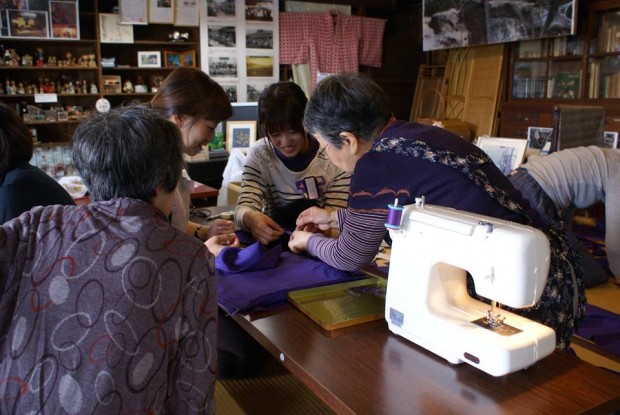
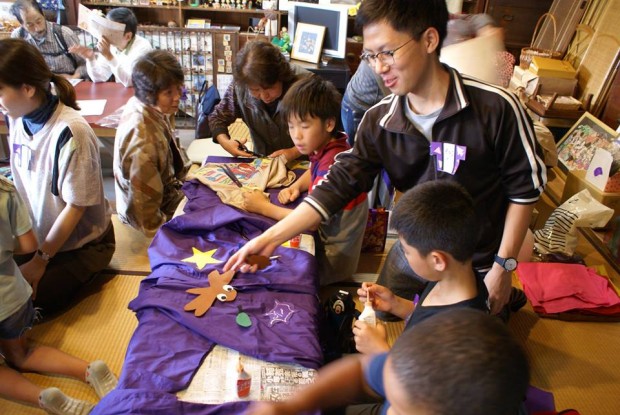
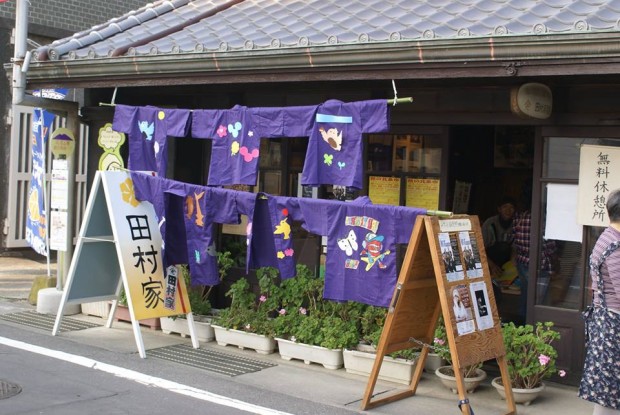
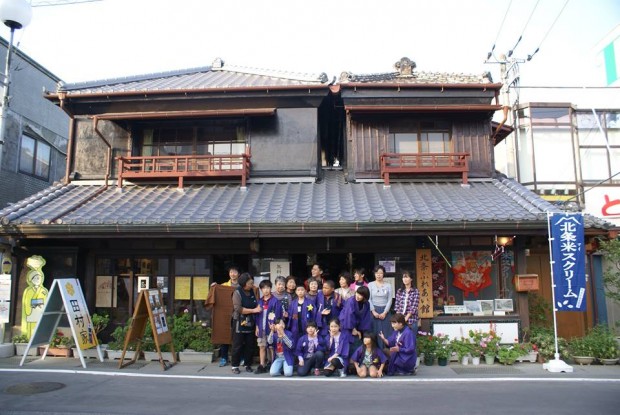
Kamado Project “The Autumn Hojo Market”
The Autumn Hojo Market was held on Nov. 1. Although it is getting colder by the day, we were blessed with good weather and got off to a good start!
This time, the Kamado Project workshop attempted to make one’s own kamado, “my kamado”. At first, everyone was like, “What do you mean by my own kamado? But as we got started, we ended up making many charming kamado, as people were absorbed in making their own unique shapes and fixing stones and colorful bricks to their original kamado. The shaped kamado is normally dried under the sun for 2 or 3 days, but this time for faster drying, we used a large earthen charcoal-burning kiln. The children, who also took part, watched with great interest their kamado being fired like a pizza.
In the evening after the Hojo Market was over and everything cleaned up, the Kamado Project team and the members of the Hojo Commerce and Industry Association and the Development and Promotion Bureau got together for a social and friendly dinner. It was an opportunity for the new members of the Kamado team who joined us this year to formally meet the people of Hojo. We heard stories about the beginnings of the Kamado Project, when they started working in Hojo, and about the tornado, which was why the project started in the first place. We had a very enjoyable time with delicious dishes and good sake. We hope to continue our activities with the blessings and favors of the Hojo people.
(Machinaga, 3rd Year at School of Art & Design)
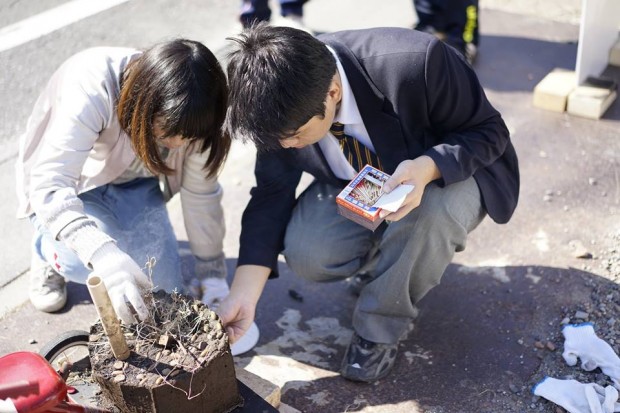
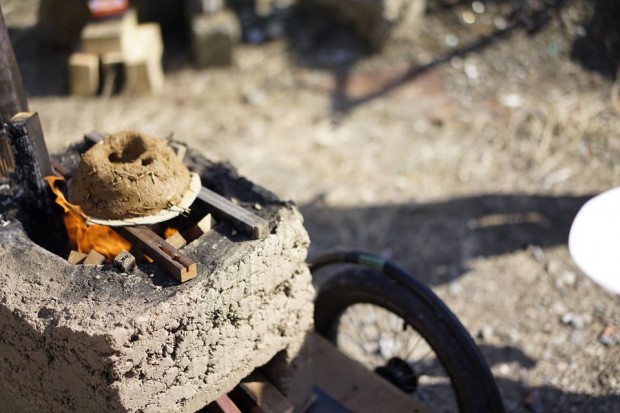
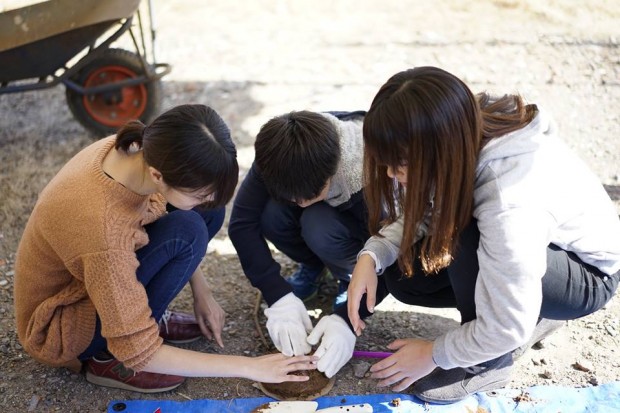
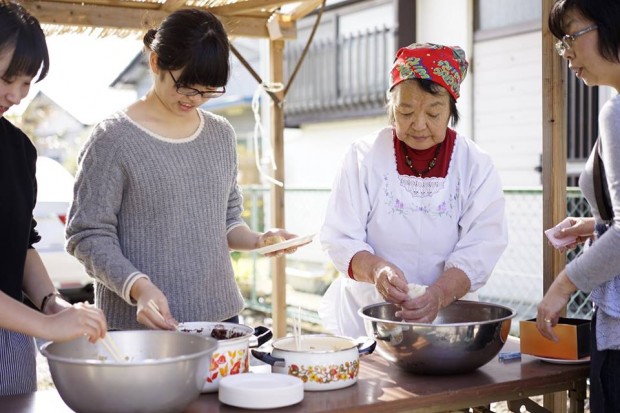
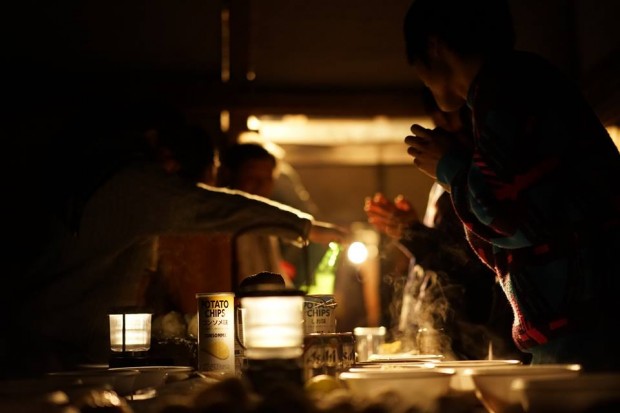
Itako Team: “Creating an Imaginary Itako Town with Tsukuba University Students!”
On Nov. 7, Saturday, a workshop, “Creating an Imaginary Itako Town with Tsukuba University Students!” was carried out at the Itako Citizens Cultural Festival. It was an event to create an imaginary town using empty boxes and paper cups.
Many children came and took part in making buildings, people and vehicles, using their imagination and available materials. The children made a balloon flying in the sky, a Ferris wheel, an aquarium and much more. We were constantly reminded of how highly creative children can be.
Some of the adults that came with the children also took part and got absorbed in the work, and we were all able to enjoy the process together as well.
As a stunt to attract people who would not take part in the creative process, easy-to-attach irises were handed out at the reception on the 1st floor of the building. As a result, people of a wide range of age groups came and we were able to complete the Itako Town with the participation of many people.
By the end of the day, we were thrilled to see the completion of a town so beautiful, something far better than what we had imagined at the start. What was most gratifying was the fact that, through the creative workshop, the children and the adults engaged in lively conversation among themselves. With our art project, we feel that we were able to link together the people of Itako. It would be our joy if, in their effort to reconstruct Itako, the web of the residents’ network were to further expand.
(Ogasawara, 4th Year at School of Art & Design)
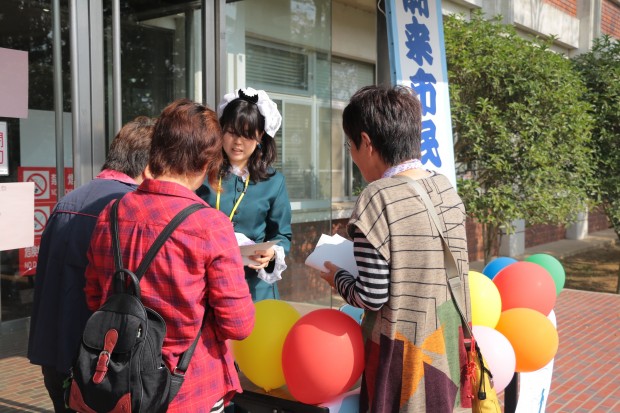
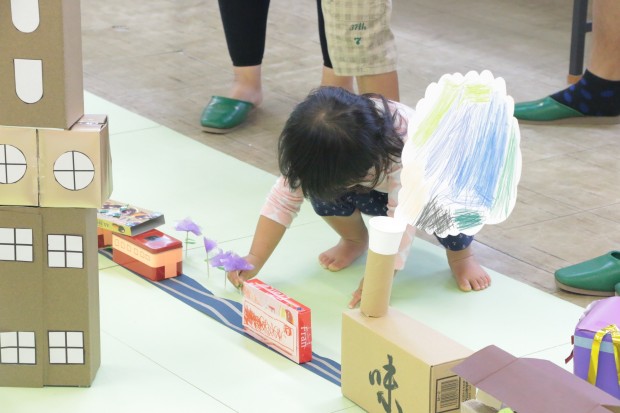

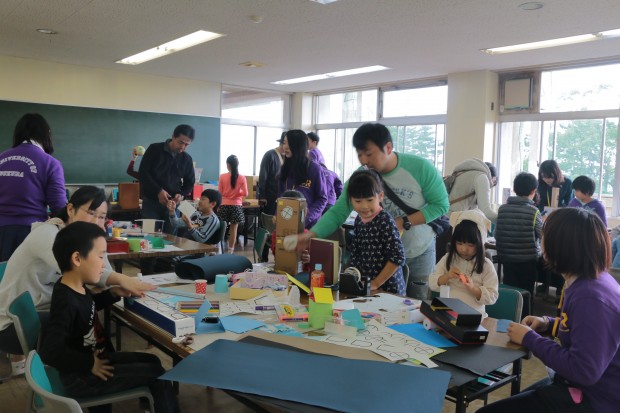
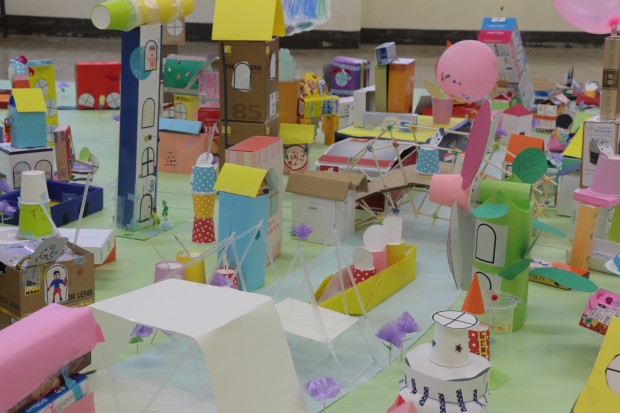

Yui’s Pottery Project “Workshop 4”
On Oct. 4, Sunday, one week after the 3rd workshop, the 4th workshop was held.
At the workshop this time, the final process was carried out for the completion of the vessels. The vessels prepared at the last workshop went through a biscuit firing and then the glaze was applied. Two kinds of glazes, “transparent (clear and smooth texture) glaze” and “Momi (rice husk) ash glaze (slightly rough texture)”, were used.
The applying of the glaze is a one-shot-only thing. The participants, with the finished images in mind, took on the challenge looking very serious. It might not be easy to see the outcome just by applying the glaze, but just wait till they come out of the glost firing!
With high expectations, the vessels were loaded into the kiln. After the glost firing, the vessels will finally be ready. At the next workshop on Oct. 11, Sunday, a lunch party will be held using the finished vessels. We are very much looking forward to next week.
(Miyake, 4th Year at School of Art & Design)
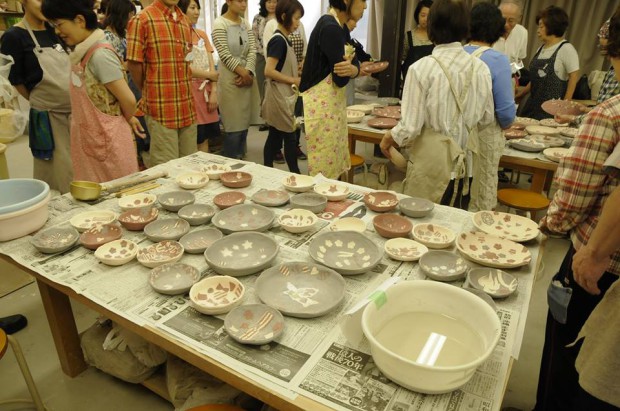
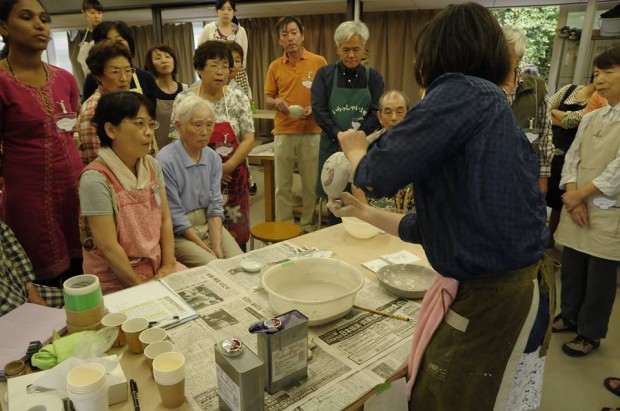
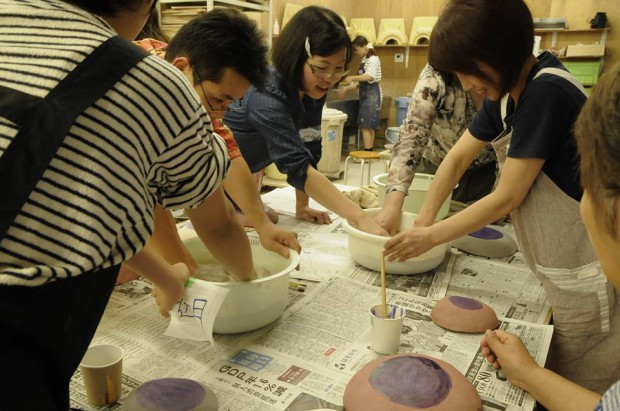
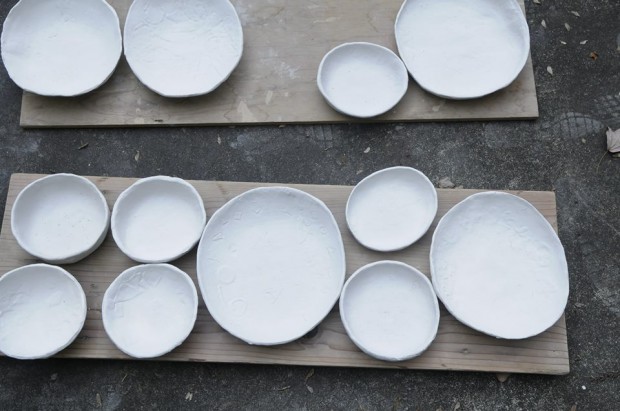
Yui’s Pottery Project “Workshop III”
After a little break since the second workshop, Workshop III was held on Sept. 27!
This was the day of full participation, because it was the day of the actual shaping of the vessels.
First, what would be the base of the vessel was chosen from the 3 colors of clay, and then the clay was sliced into thin sheets.
When the base had been prepared, the next step was creating the parts for the designs. This was where the “Nerikomi blocks” made at Workshop II came in. The clay was cut into any shape or size as desired using cookie cutters and bamboo skewers.
Many of the parts created were shared among the participants!
The participants arranged the parts on the base as they wished, and original patterns were formed.
The last step was to press the base into the mold created at Workshop I, adjust to shape and it was done!
At first, the participants were having a hard time trying to decide on their designs, but in the afternoon, the mood totally changed. Everyone had ideas about their creation and the work moved on smoothly.
At the next meeting on Oct. 4, we will be putting the final touches to the works.
It looks like we can expect to see many wonderful vessels showing character and originality!
(Miyake, 4th Year at School of Art & Design)
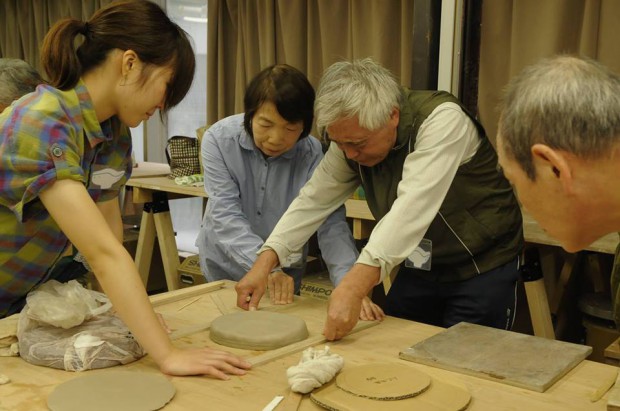
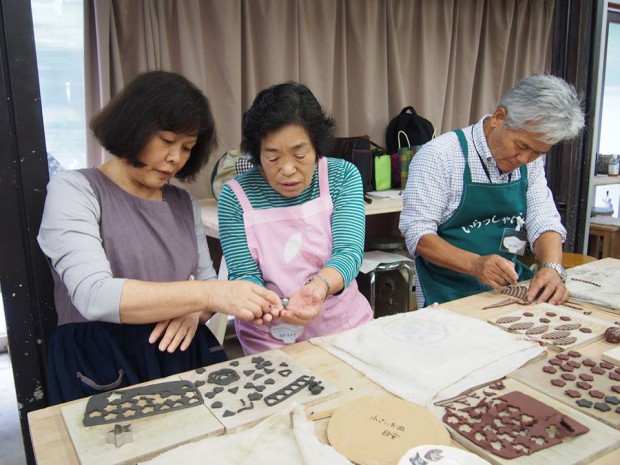
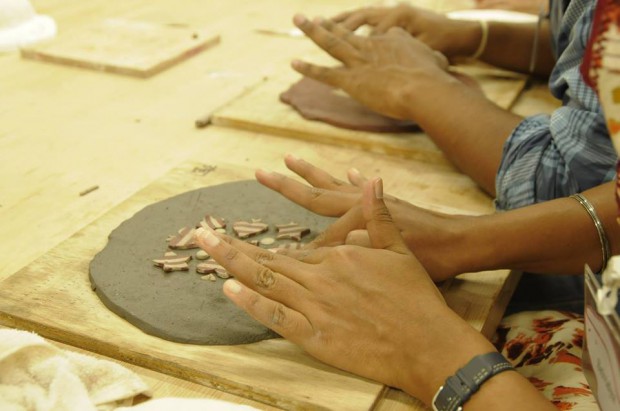
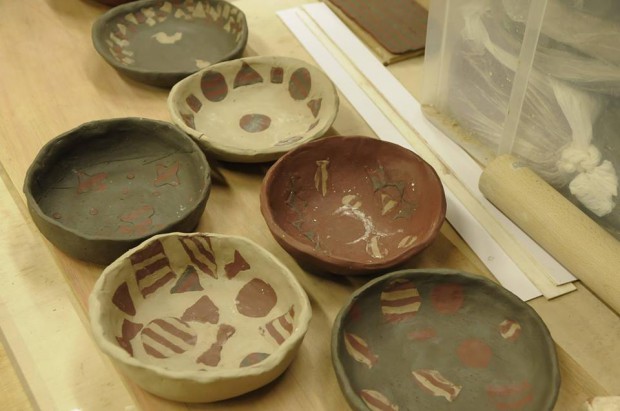
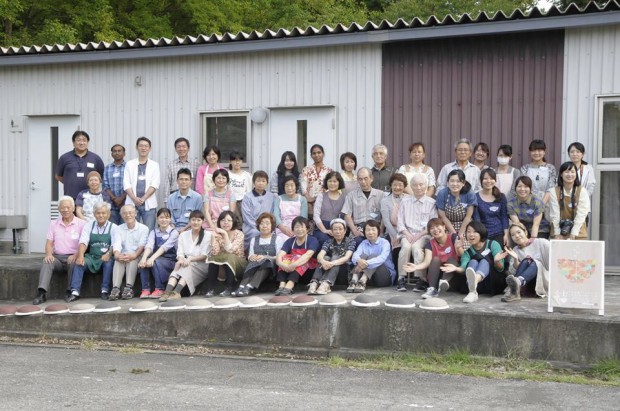
Yui’s Pottery Project “Workshop II”
On Sept. 6, Sunday, Workshop II, “Tsuchi-dukuri”, was held.
First, a procedure called “Kiku-neri” to make the clay ready for the forming of the vessel was carried out. Kiku-neri is an important procedure to let out the air from the clay. The trick is in the way the hands are used and it can be quite a challenge. Though the participants kept saying how hard it was, they kept trying. They gradually got the knack of it and clay of very good quality was made.
Next, we made “Nerikomi blocks”, which are blocks of clay with patterns already set in them. The procedure went smoothly as the teams cooperated with one another.
It was a somewhat physically tough Workshop II, but there were more dialogs among the participants and it turned out to be a lively meeting.
The next meeting will be on Sept 27, Sunday, and we will be working on the main part of shaping the vessels. We are all looking forward to seeing what sort of vessels will be created!
(Miyake, 4th Year at School of Art & Design)
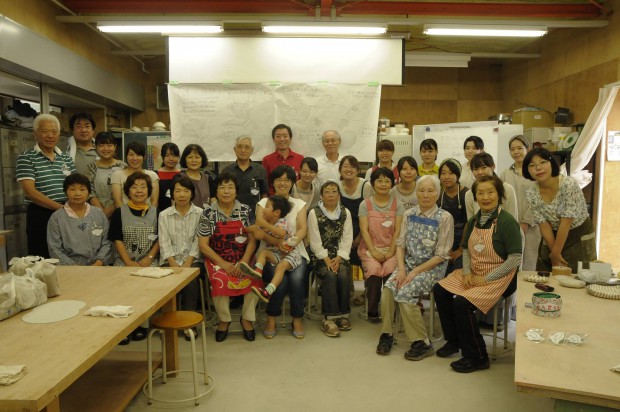
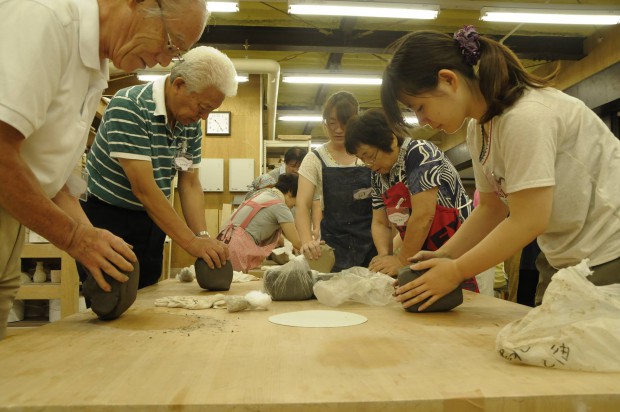
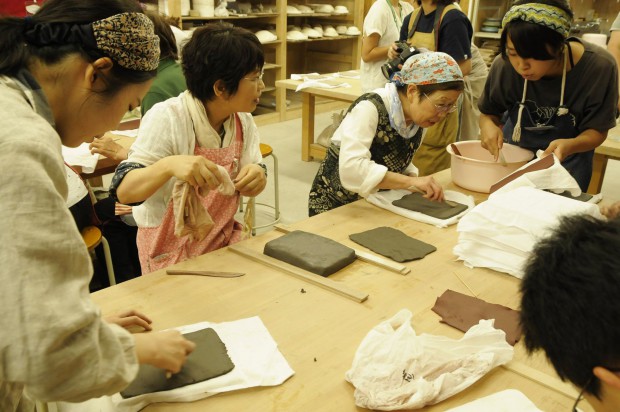
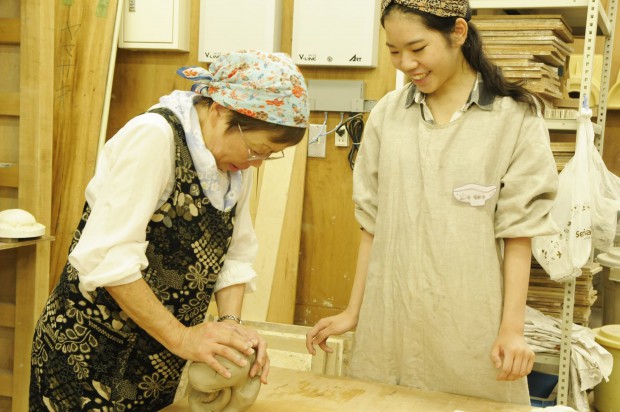
Yui’s Pottery Project “Workshop I”
Yui’s Pottery Project’s Workshop I was held on Sept. 5, Saturday. The mold, which will be the base of the vessel, was made.
What was done at this first workshop required much physical effort, such as shaping big chunks of clay and using large amounts of plaster.
The participants worked hard looking keen and serious, but we also saw many of them talking and smiling as they helped each other.
It is our joy to hear people say, “I’m so excited wondering how the vessels are going to turn out.”
At the second meeting on Sept. 6, we will be doing the “Tsuchi-dukuri”, which is a procedure to prepare the clay that will be used to create the vessels. Although the workshop will be held over two consecutive days, I hope that tomorrow will be just as much fun!
(Miyake, 4th Year at School of Art & Design)

